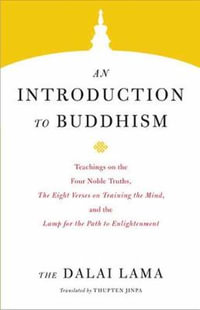This groundbreaking study focuses on a village called Te in a "Tibetanized" region of northern Nepal. While Te's people are nominally Buddhist, and engage the services of resident Tibetan Tantric priests for a range of rituals, they are also exponents of a local religion that involves blood sacrifices to wild, unconverted territorial gods and goddesses. The village is unusual in the extent to which it has maintained its local autonomy and also in the degree to which both Buddhism and the cults of local gods have been subordinated to the pragmatic demands of the village community.
Charles Ramble draws on extensive fieldwork, as well as 300 years' worth of local historical archives (in Tibetan and Nepali), to re-examine the subject of confrontation between Buddhism and indigenous popular traditions in the Tibetan cultural sphere. He argues that Buddhist ritual and sacrificial cults are just two elements in a complex system of self-government that has evolved over the centuries and has developed the character of a civil religion. This civil religion, he shows, is remarkably well adapted to the preservation of the community against the constant threats posed by external attack and the self-interest of its own members. The beliefs and practices of the local popular religion, a highly developed legal tradition, and a form of government that is both democratic and accountable to its people all these are shown to have developed to promote survival in the face of past and present dangers.
Ramble's account of how both secular and religious institutions serve as the building blocks of civil society opens up vistas with important implications for Tibetan culture as a whole.
Industry Reviews
"This study brilliantly illuminates the much discussed conflict of Tibetan Buddhism and 'pre-Buddhist' religious practices of territorial gods and sacrifice by creatively analyzing them as elements integrated into a broader civil religion guiding lives and society in local communities in the Nepalese highlands. Anyone interested in the fabric of communities and Tibetan Buddhism will find it essential reading." --David Germano, Associate Professor of Tibetan
Studies, University of Virginia
"Charles Ramble's book should become a classic, as a brilliant example of how a meticulous ethnography can address the most fundamental issues of anthropology, in this case: what creates the magic of society, what provides institutions with their spurious yet persuasive objectivity and impersonality? With extreme attention to the detail of social interaction, Ramble provides a fascinating account of this process in the limiting case of an extremely small and
isolated group. It demonstrates how traditional political and economic institutions are manipulated by the Tepas but also constrain them, in their pragmatic use of foreign religion and local cults."
--Pascal Boyer, author of Tradition as Truth and Communication and The Naturalness of Religious Ideas
"There are ethnographies and then are ethnographies. The Navel of the Demonness is a first-rate and pathbreaking comparative ethnography of the people of Te and other communities that lie nestled among the mountains of Upper Mustang, along Nepal's border with Tibet... Happily combining fieldwork with information culled from especially indigenous archival documents, Charles Ramble has succeeded in writing both a synchronic and a diachronic cultural
ethnography of the area. Moreover, he has done so using a diction that is as refreshingly lucid as it is informed by his obviously profound learning. As such, his study is free from the obfuscating jargon that so
often accompanies superficiality. I dare say, The Navel of the Demonness is one of the best books on Nepalese and Tibetan anthropology to appear in years." --Leonard W.J. van der Kuijp, Professor of Tibetan and Himalayan Studies, Harvard University
"This study brilliantly illuminates the much discussed conflict of Tibetan Buddhism and 'pre-Buddhist' religious practices of territorial gods and sacrifice by creatively analyzing them as elements integrated into a broader civil religion guiding lives and society in local communities in the Nepalese highlands. Anyone interested in the fabric of communities and Tibetan Buddhism will find it essential reading." --David Germano, Associate Professor of Tibetan
Studies, University of Virginia
"Charles Ramble's book should become a classic, as a brilliant example of how a meticulous ethnography can address the most fundamental issues of anthropology, in this case: what creates the magic of society, what provides institutions with their spurious yet persuasive objectivity and impersonality? With extreme attention to the detail of social interaction, Ramble provides a fascinating account of this process in the limiting case of an extremely small and
isolated group. It demonstrates how traditional political and economic institutions are manipulated by the Tepas but also constrain them, in their pragmatic use of foreign religion and local cults."
--Pascal Boyer, author of Tradition as Truth and Communication and The Naturalness of Religious Ideas
"There are ethnographies and then are ethnographies. The Navel of the Demonness is a first-rate and pathbreaking comparative ethnography of the people of Te and other communities that lie nestled among the mountains of Upper Mustang, along Nepal's border with Tibet... Happily combining fieldwork with information culled from especially indigenous archival documents, Charles Ramble has succeeded in writing both a synchronic and a diachronic cultural
ethnography of the area. Moreover, he has done so using a diction that is as refreshingly lucid as it is informed by his obviously profound learning. As such, his study is free from the obfuscating jargon that so
often accompanies superficiality. I dare say, The Navel of the Demonness is one of the best books on Nepalese and Tibetan anthropology to appear in years." --Leonard W.J. van der Kuijp, Professor of Tibetan and Himalayan Studies, Harvard University
"This book should be on the reading list of any graduate course on Tibetan or Himalayan societies and religion, and provides for a most thoroughly enjoyable read for a much larger audience."--Religion
"With a powerful and well-wrought conclusion that brings the book to a close, this excellent monograph can be read in its entirety or as a series of discrete lectures on the civil, religious, and psychological frames that shape Tibetan culture." --The Journal of Asian Studies

![When Things Fall Apart : Heart Advice For Difficult Times [Thorsons Classics edition] - Pema Chodron](https://www.booktopia.com.au/covers/200/9780007183517/5907/when-things-fall-apart.jpg)






















